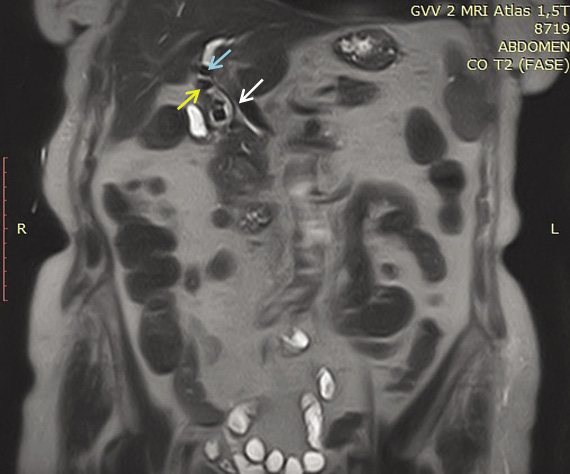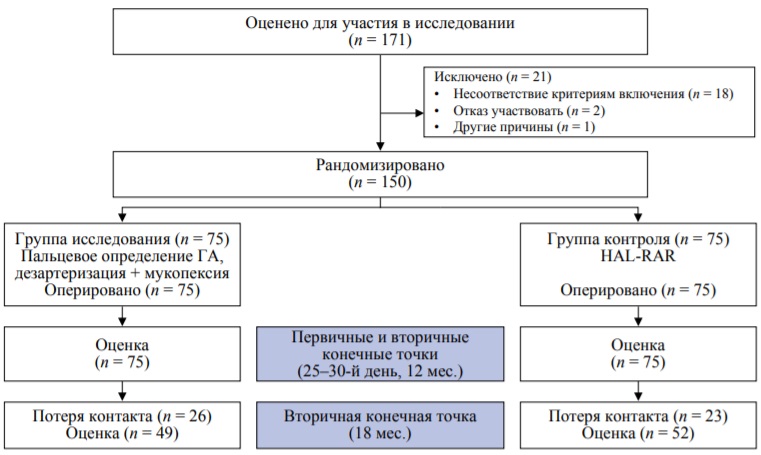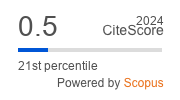BIOMEDICAL STATISTICS TUTORIAL
Descriptive statistics provides tools to explore, summarize and illustrate the research data. In this tutorial we discuss two main types of data - qualitative and quantitative variables, and the most common approaches to characterize data distribution numerically and graphically. This article presents two important sets of parameters - measures of the central tendency (mean, median and mode) and variation (standard deviation, quantiles) and suggests the most suitable conditions for their application. We explain the difference between the general population and random samples, that are usually analyzed in studies. The parameters which characterize the sample (for example, measures of the central tendency) are point estimates, that can differ from the respective parameters of the general population. We introduce the concept of confidence interval - the range of values, which likely includes the true value of the parameter for the general population. All concepts and definitions are illustrated with examples, which simulate the research data.
INTERNAL MEDICINE
Osteoarthritis is the second most common disorder after heart disease. This progressive degenerative disease affects the knee joint more than any others. The exact etiology of knee osteoarthritis is not clear, however, there are many predisposing factors such as obesity, age, gender, etc., that can increase the incidence and prevalence of this disease. Early diagnosis in knee osteoarthritis is very important. Despite the variety of diagnostic methods, lack of a valid and reliable diagnostic approach to detect the disorder in early stages has always been a challenge for researchers. Establishing an efficient therapeutic protocol for these patients is another crucial challenge. Recently, in addition to conventional treatments, which are surgical and non-surgical, tissue engineering and regenerative medicine as novel therapeutic modalities have received remarkable attention. In this paper, current diagnostic and therapeutic methods for knee osteoarthritis are discussed and potential biomarkers for early diagnosis and monitoring the clinical condition are discussed.
Hypoparathyroidism is a rare endocrine disease. In most cases in adult patients, the cause of hypoparathyroidism is damage or removal of parathyroid glands during surgical interventions on the neck; other causes are rarely observed.
Case report. A 52-year-old man with episodes of seizures, intense muscle pain, progressing for 7 years and resistance to treatment with myorelaxant, anxiolytics and nonsteroidal anti-inflammatory drugs was examined and hypocalcemia associated with low parathyroid hormone and excessive urinary calcium excretion was found. Ultrasound examination didn't reveal any changes in parathyroid glands. The patient was diagnosed with idiopathic hypoparathyroidism. Treatment with calcium supplements and active metabolites of vitamin D led to an improvement in clinical symptoms and laboratory parameters.
Discussion. Hypoparathyroidism as part of several genetic syndromes was excluded due to the late- onset of the disease and the absence of concomitant diseases. Ultrasound of the parathyroid glands made it possible to rule out metastasis and storage diseases. It is recommended to perform genetic testing of the chromosomes 22 and 10 to exclude rare variants of syndromic hypoparathyroidism with the late-onset in the form of isolated hypocalcemia.
Management of complicated cholelithiasis (gallstone disease) in elderly patients is often limited to the use of only minimally invasive interventions.
Case report. We report three clinical cases of gallstone disease complications in patients over 75 years old who had previously undergone minimally invasive surgery and who was refused radical surgical treatment due to comorbidity. In two patients, this led to the development of purulent cholangitis and multiple organ failure, which required emergency hospitalization. At the first stage, biliary drainage was performed; then the multidisciplinary team managed to stabilize the condition of the patient; at the second stage, biliodigestive anastomoses were formed through laparotomic access on a loop turned off by the Ru. Complete relief of symptoms was achieved and no relapse was observed.
In another case, cholecystoduodenal fistula with stone migration and complete obstruction of the small intestine was found during laparotomy in an asymptomatic patient hospitalized for elective surgery.
Discussion. Comorbidity should not be considered as an absolute contraindication to radical surgery of complicated cholelithiasis in elderly patients: gallstone disease complications in most cases exceed the risks of surgical intervention. Radical surgery of complicated gallstone disease in patients over 75 years old is possible in condition of patient management by a multidisciplinary team.
BIOMEDICINE
The new method of the formation of nanocomposite materials based on carbon nanotubes for the regeneration of connective tissues has been developed.
Aim. Study of the structure, mechanical characteristics and biocompatibility of the obtained materials.
Materials and methods. The experimental samples of nanocomposite materials were based on multi-walled and singlewalled carbon nanotubes, the matrix was bovine serum albumin. A layer of liquid dispersion of the components on a silicon substrate or in a container was irradiated with laser radiation to form the solid nanocomposite material. The microstructure of the obtained samples was analyzed with X-ray microtomography, the tensile strength was investigated using a testing machine. Fibroblast cells were incubated with experimental samples for 3, 24, 48, and 72 h and then fixed with glutaraldehyde. Cell growth during incubation with samples was studied using optical and atomic force microscopy.
Results. It was found that a slight decrease in tensile strength and increase in the degree of deformation were observed with an increase in the concentration of carbon nanotubes. At the same time, the mechanical parameters of the samples corresponded to the requirements for materials for the restoration of connective tissue defects. Microscopic studies indicate good adhesion of cells to the nanocomposite material, no toxic effect of the samples on the cells was found. After 3 hours of incubation, the cells had their original rounded shape, after 24 hours of incubation cells began to proliferate on the sample's surface and were spindle-shaped. After 48 and 72 hours, the cells practically formed a monolayer on the surface of the samples.
Conclusion. The results of the study show that the structural and mechanical parameters of the developed nanocomposite materials meet the requirements of biomedicine. It was also shown that nanocomposite materials do not suppress cell growth and can serve as a scaffold for the regeneration of damaged tissues.
PATHOLOGICAL PHYSIOLOGY
Aim. To establish the effect of experimental intra-abdominal hypertension (IAH) on the teeth-jaw system of rats in the long-term period based on the study of pro-inflammatory cytokines and morphological analysis of the elements of the temporomandibular joint (TMJ) and salivary glands.
Materials and methods. The experiment was carried out on 60 newborn rats; IAH was modelled by injecting collagen into the abdominal cavity to a predetermined level of intra-abdominal pressure. The rats were evenly (n = 20) divided into 3 groups: 1st - control; 2nd and 3rd - with light and severe IAH, respectively. Serum levels of IL-18, MCP-1, NGAL were determined by multiplex analysis after 10 and 120 days, VEGF-C - after 10 days - by ELISA. The morphological examination of the TMJ and salivary glands was performed using a Leica DM2000 microscope after 120 days.
Results. After 10 days and 120 days, blood serum levels of NGAL, IL-18 and MCP-1 were statistically significantly increased in groups 2 and 3 compared to the control; the concentration of MCP-1 increased in proportion to the severity of the IAH with the maximum values in group 3. After 10 days, the level of VEGF was significantly increased in group 2 compared to the control group (p < 0.02). Inflammation of the TMJ was observed significantly more often in groups 2 and 3 than in the control group (p = 0.0002). In group 3, circulatory disorders and bone marrow degeneration of the TMJ, as well as inflammation, circulatory disorders and hyperplasia of the lymphoid tissue of the salivary glands were statistically significantly more often compared to groups 1 and 2.
Conclusion. In the long term, experimental IAH showed an increase in the levels of markers of inflammation and hypoxia in the blood serum of rats; the severity of synovitis and sialadenitis grew with an increase in the level of intra-abdominal pressure; the maximum deviations in inflammation markers and morphological changes in the TMJ and salivary glands of rats were observed in the group with severe IAH.
SURGERY
Aim. To evaluate the efficacy of haemorrhoidal artery ligation (HA) with a preliminary palpatory determination of its localization supplemented by mucopexy of haemorrhoids as a new surgical method in the treatment of haemorrhoidal disease (HD) and to compare it with HAL-RAR technology.
Materials and methods. The randomized controlled clinical trial included patients over 18 years old with Goligher's grade II, III or IV symptomatic HD. We operated on patients in the study group (n = 75) using palpatory determination of the localization of HA and subsequent mucopexia. In the control group (n = 75) we used HAL-RAR. The primary endpoint (25-30 days after surgery): recurrence rate of HD symptoms. Secondary endpoints: postoperative complication rate, pain intensity on a visual-analogue scale from 1 to 10 points, patient satisfaction with the treatment results on a 10-point scale.
Results. According to the initial characteristics (age, gender, body mass index, stage of HD, frequency of clinical symptoms), the groups did not differ. Anal bleeding relapse developed: study group - 11%, control group -14%; relapse of haemorrhoids prolapse: 3% and 5% respectively (p > 0.05). Postoperative complications were noted in 6 (8%) in the study group and 4 (5%) in the control group (p > 0.05). The intensity of pain on the 2nd and 25-30 days after surgery was 6.3 [4.8; 7.4] and 1.2 [0.6; 2.5] points in the study group and 6.5 [4.9; 7.3] and 2.1 [1.9; 4.1] in the control group, respectively (p > 0.05). Patient satisfaction with the treatment results after 12 months was estimated at 8.7 [7.9; 9.2] and 9.4 [8.2; 9.6] in the study and control groups, respectively (p > 0.05).
Conclusion. HA ligation with a preliminary palpatory determination of its localization and supplemented with mucopexy of haemorrhoids is no less effective than HAL-RAR in preventing haemorrhoidal bleeding and prolapse of the nodes.
COVID-19
The review presents the current understanding of the incidence and nature of neurological disorders in patients with the so-called long COVID syndrome. Symptoms, putative pathophysiological mechanisms, risk factors, search for methods of treatment and rehabilitation of patients using the patient's own hematopoietic cells are discussed. A search was carried out for scientific articles, including those published in peer-reviewed journals indexed in PubMed, Web of Science, Scopus and RSCI. The inclusion of stem cells (SC) in rehabilitation programs for patients with various injuries and diseases of the central nervous system (CNS) is a promising area of research. The mechanisms of CNS damage therapy based on the use of adult-type pluripotent stem cells, including CD34+, consist of many aspects. On the background of SC transplantation, damaged nerve cells and surrounding tissues, including neurons and glial cells, can be restored, which helps to ensure the integrity of the nerve conduction pathway and, thus, restore nerve function. SC therapy can suppress genes involved in inflammation and apoptosis, as well as activate genes with neuroprotective action, thereby protecting spinal neurons from secondary damage. This line of cell therapy can be used to treat long COVID syndrome.
ISSN 2658-3348 (Online)













































